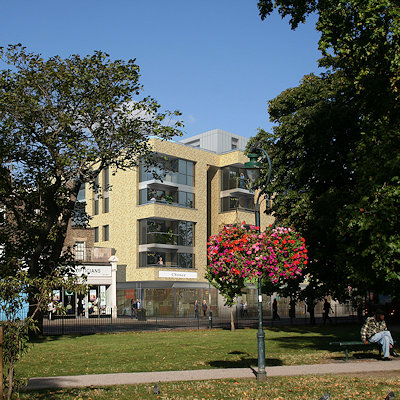
Like us on Facebook
PLACE NAMES


 
|
|
Camberwell
|

|
|
Camberwell appears in the Domesday Book as Cambrewelle. The name may derive from the Old English Cumberwell or Comberwell, meaning 'Well of the Britons', referring to remaining Celtic inhabitants of an area dominated by Anglo-Saxons. An alternative theory suggests the name may mean 'Cripple Well', and that the settlement developed as a hamlet where people from the City of London were expelled when they had life-threatening diseases like leprosy, for treatment by the church and the clean, healing waters from the wells. Springs and wells are known to have existed on the southern slope of Denmark Hill, especially around Grove Park.
It was already a substantial settlement with a church when mentioned in the Domesday Book, and was the parish church for a large area including Dulwich and Peckham. It was held by Haimo the Sheriff (of Kent). Its domesday assets were: 6 hides and 1 virgate; 1 church, 8 ploughs, 63 acres of meadow, woodland worth 60 hogs.
Up to the mid-nineteenth century, Camberwell was visited by Londoners for its rural tranquillity and the reputed healing properties of its mineral springs. Like much of inner South London, Camberwell was transformed by the arrival of the railways in the 1860s.
The crossroads at the centre of Camberwell is the site of Camberwell Green, a very small area of common land which was once a traditional village green on which was held an annual fair of ancient origin which rivalled that of Greenwich.
Camberwell today is a mixture of relatively well preserved Georgian and 20th-century housing, including a number of tower blocks. Camberwell Grove, Grove Lane and Addington Square have some of London's most elegant and well-preserved Georgian houses.
The Salvation Army's William Booth Memorial Training College, designed by Giles Gilbert Scott, was completed in 1932: it towers over South London from Denmark Hill. It has a similar monumental impressiveness to Gilbert Scott's other local buildings, Battersea Power Station and the Tate Modern, although its simplicity is partly the result of repeated budget cuts during its construction: much more detail, including carved Gothic stonework surrounding the windows, was originally planned. Camberwell is home to one of London's largest teaching hospitals, King's College Hospital with associated medical school the Guy's King's and St Thomas' (GKT) School of Medicine. The Maudsley Hospital, an internationally significant psychiatric hospital, is located in Camberwell along with the Institute of Psychiatry.
Early music halls in Camberwell were in the back hall of public houses. One, the "Father Redcap" (1853) still stands by Camberwell Green, but internally, much altered. In 1896, the Dan Leno company opened the "Oriental Palace of Varieties", on Denmark Hill. This successful venture was soon replaced with a new theatre, designed by Ernest A.E. Woodrow and with a capacity of 1,553, in 1899, named the "Camberwell Palace". This was further expanded by architect Lewen Sharp in 1908. By 1912, the theatre was showing films as a part of the variety programme and became an ABC cinema in September 1932 - known simply as "The Palace Cinema". It reopened as a variety theatre in 1943, but closed on 28 April 1956 and was demolished.
The 1957 film, The Smallest Show on Earth, which tells the tale of a struggling family-run suburban cinema, is thought to have been based on the Palace. Nearby, marked by Orpheus Street, was the "Metropole Theatre and Opera House", presenting transfers of West End shows. This was demolished to build an Odeon cinema in 1939. The cinema seated 2,470, and has since been demolished. A second ABC cinema, known originally as the Regal Cinema and later as the ABC Camberwell, opened in 1940. With only one screen but 2,470 seats, the cinema was one of the largest suburban cinemas in London and continued to operate until 1973, after which it was used as a bingo hall until February 2010. The building retains its Art Deco style and is Grade II listed.
On 3 July 2009 a major fire swept through Lakanal House, a twelve-storey tower block. Six people were killed and at least 20 people were injured.
|
 Feel free to Email me any additions or corrections Feel free to Email me any additions or corrections
LINKS AVAILABLE TO YOUR SITE
| |





